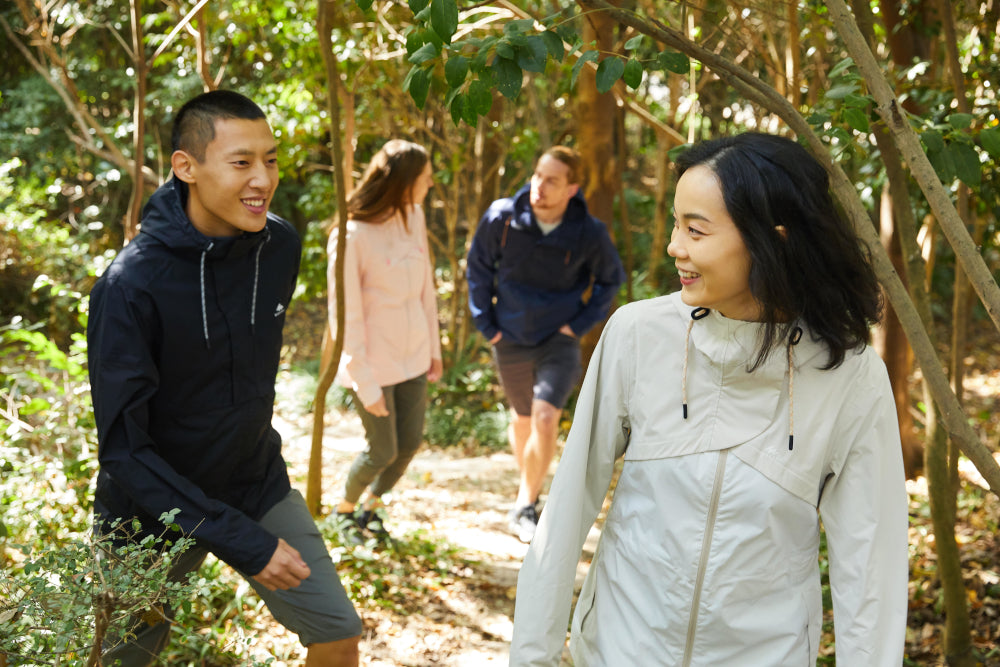
How To Eat When Out Hiking
Share
The longer the hike, the more preparation is required. Do not forget meals, snacks, and drinks to make your hike a success.
1. Meals Must Cover the Energy You Spend!
Hiking requires prolonged effort across hilly and steep terrain. The choice of food must, as such, take into account energy expenditure, the fight against fatigue and cold and sometimes high-altitude symptoms.
Meals over the day must be balanced and provide enough calories to meet the requirements which can be up to 2000 - 3000 Cal over a day's hiking. The variety of the meals is also important to stimulate appetite which is negatively affected with altitude.
2. How Do You Organize Breakfast?
The first meal of the day is essential to get off on the right foot and avoid bouts of tiredness and snacking all throughout the hike. This meals must primarily provide carbohydrates for energy for the long-term. You might favor food with a low glycemic index (complex carbohydrates) like bread, cereals, etc.
In some speciality stores, you can find packaged breakfasts. This energy intake must be accompanied by a hot drink, ideal for warming up in the cool morning air.
Breakfast also includes fruit, fruit juice or a fruit compote to provide a minimum of vitamins.
3. How Do You Organize Lunch?
Lunch is often eaten quickly and generally takes the form of a picnic. It should mainly contain starchy foods like bread if you go for a sandwich or pasta or rice if you go for mixed salads. Examples of meals: - Bread, ham, cheese, salad and butter or a little mayonnaise as an accompaniment, or if you prefer salads: Pasta, diced cold pork, diced tomatoes, corn, pickles, and vinaigrette.
- Fruit is sometimes difficult to carry because it is perishable, especially when the hike occurs over several days; however, their addition to a good meal is essential.
- Consider bread with tuna or a light poultry or ham-based spread
- This meal should be rich in carbohydrates and low in fat in order to make digestion easier and therefore allow for a pleasant and quick return to hiking. Let's not forget that hydration is a priority all throughout your hike and that you should avoid alcoholic drinks as much as possible.
4. How Do You Organize the Evening Meal?
Have you decided to go bivouacking? This meal is therefore important. Not only must it allow you to recuperate from your day but it must also help you head off fit for the next. This meal is often more elaborate than lunch as you have more time available. It must meet the requirements of a day's exertion while being enjoyable. Let's not forget that it must also be light and easily transportable.
This dinner can begin with a dried soup. Opt with those that include vermicelli which increases energy intake and/or those which contain pieces of chicken or fish to increase protein intake. This soup can be completed with pasta, which is easy to carry and rich in energy, it must be accompanied by protein which can be found in tinned tuna for example. To make carrying easier and, above all, provide variety in the meals, you can also go for dried meals designed for this kind of activity. These meals are light, easy to carry and above all else, varied: Chicken curry pasta, Bolognaise pasta, shepherd's pie, etc. To finish off the meal, the dessert may consist of a fruit compote or a rice cake to increase the carbohydrate intake.
5. Should You Eat While Walking?
A hike may last between a few hours and several days and, like with all long-lasting activity, the body has needs that must be met. Hydration It is advisable to drink regularly throughout the hike. However it is difficult to carry around the water required. How do I restock on water? Here are some tips: - When you come across a high-altitude shelter, make the most of it to stock up on drinking water.
- When you pass through a village which has a park or open public spaces, consider stocking up on drinking water; parks tend to have water fountains.
- If you drink river water, use tablets removing all dangerous micro-organisms contained in this water. Snacks To maintain a regular pace all throughout the day, give yourself small snack breaks to get some energy. Cereal bars, dried fruit and/or energy bars perfectly meet these requirements and are easily transportable.















